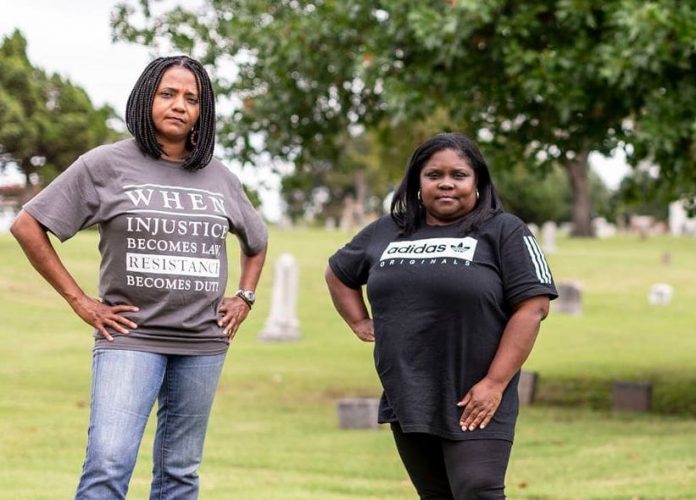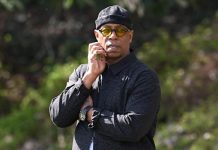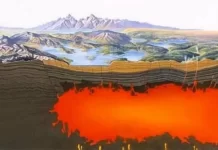Tulsa mass graves investigation: Mayor plans to re-examine the issue.
Mayor G.T. Bynum made public on Tuesday his plan to re-examine whether there are any mass graves from the 1921 Tulsa race massacre.
But Bynum has been thinking about it for years. Six years. He and former City Councilor Jack Henderson met with former state archaeologist Bob Brooks in about 2012 to discuss his excavation work more than a decade earlier on behalf of the Tulsa Race Riot Commission.
“I always thought, if I am ever mayor and in a position to have executive authority, that I would do something about it,” Bynum said. “Because I think if there are mass graves there, the citizens of Tulsa deserve to know and the victims and their families deserve to know it.”
The city will begin with Oaklawn Cemetery, which has been searched before for unmarked graves, before moving on to Rolling Oaks Memorial Gardens, formerly Booker T. Washington Cemetery, and property near Newblock Park.
No time table has been set.
“What we are looking at doing is really three phases,” Bynum said. “First, identifying if there are mass graves at all. And if there are, identifying what kind of mass grave it is. Is it a pauper’s grave, or is it a true mass grave from the massacre? And third, if it is a mass grave from the massacre, then we want to do forensic examination on the bodies that are there to hopefully identify them and their causes of death.
“I think all of that will help inform a greater understanding around what happened in 1921.”
Bynum said he reached out to Brooks after becoming mayor to restart the discussion about possible mass grave sites. His discussions with Brooks, both old and new, have informed the city’s approach to the examination.
It was through Brooks, Bynum said, that he learned that the Oaklawn Cemetery would be the best place to begin the investigation.
“The most likely place that they found (for possible mass graves) is at Oaklawn,” Bynum said. “And if you walk by or drive by it, you can see it. You have a cemetery full of headstones and then there is this giant grassy area right by the Inner Dispersal Loop that has nothing there, and that is the space that is in question.”
Bynum said it has been difficult for any real testing to be done at Newblock Park because of all the underground infrastructure in place from the city’s old water system.
As for the old Booker T. Washington Cemetery, “there have been graves that have been disturbed, but it was still somewhat inconclusive,” the mayor said.
The massacre, which was commonly known as the Tulsa race riot for generations, occurred May 31-June 1, 1921. Dozens of deaths were confirmed, but some estimate that hundreds of people were killed. Hundreds more were injured, and thousands were left homeless. The prosperous black business district on Greenwood Avenue was destroyed, as was much of the black residential area.
Although one of the deadliest and most destructive riots in U.S. history, it was discussed very little until the 1980s, when Scott Ellsworth’s book “Death in a Promised Land” was published. A state commission formed in 1997 subsequently published a 2001 report on the conflagration.
Bynum said the city expects to work with either the Oklahoma Archaeological Survey or the Arkansas Archaeological Survey to conduct the new examination.
Bynum said he did not plan to make the city’s examination of the grave sites public unless the examination found mass graves.
But the mayor was asked about the massacre and gravesites during a public meeting in north Tulsa on Tuesday.
“I felt like to be honest with the folks in north Tulsa, who are very passionate about this, I wanted to let them know what we are doing,” Bynum said.
The man who raised the issue with Bynum was the Rev. Robert R.A. Turner of historic Vernon AME Church.
Turner said the church is the only structure still standing that survived the massacre.
“I think it is great that he is planning to do this,” Turner said. “I think it is a wonderful first step. Families were torn apart that day, and they were never united again.”
Turner said he reminded the mayor that the 2021 centennial commemoration of the massacre won’t mean anything if justice is never served.
“We cannot go forward without an investigation,” Turner said. “How can we go forward celebrating the centennial in 2021? What are we really celebrating?”
City Councilor Vanessa Hall-Harper represents District 1, largely in north Tulsa. She described the city’s plan as “absolutely wonderful” but long overdue.
“We are never going to forget what happened,” she said. “I know to a large extent the powers that be in this state would like us to, but we are not going to.”















